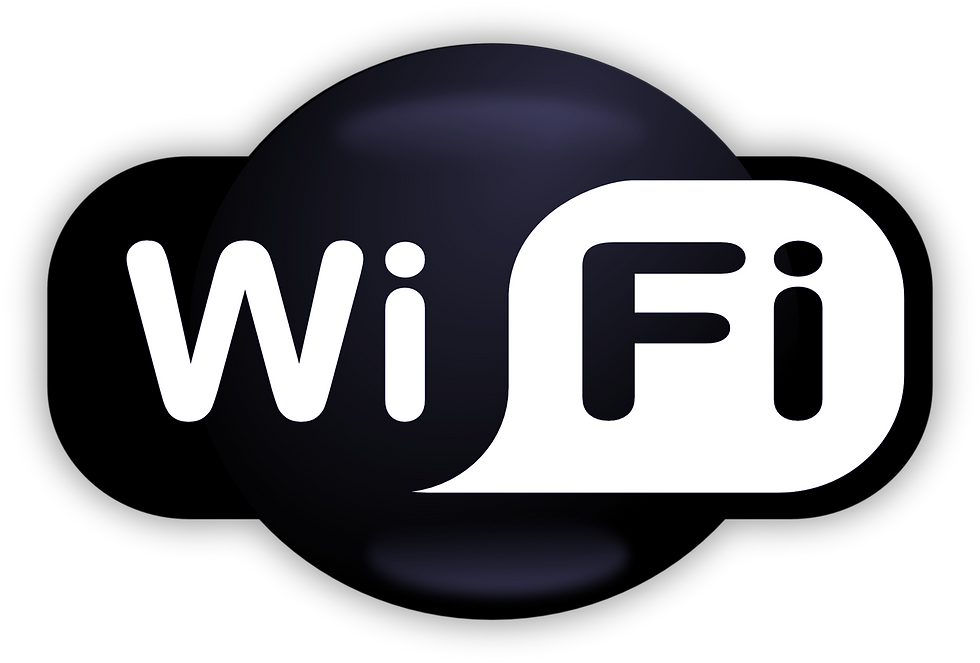Evolution of Wi-Fi | It's Latest Advancements and Innovations
- Kalyan Bhattacharjee
- May 31, 2023
- 3 min read
Updated: Mar 15

From Ethernet to Everywhere: The Evolution and Power of Wi-Fi
Introduction
In our rapidly evolving digital world, Wi-Fi has emerged as an indispensable technology, revolutionizing the way we connect and communicate. From its humble beginnings to the latest advancements, Wi-Fi has continuously evolved to meet the growing demands of our interconnected society. In this blog, we will delve into the fascinating history of Wi-Fi, explore its current versions, uncover the myriad benefits it offers, and highlight its latest advancements that shape the way we live and work.
The History of Wi-Fi
Wi-Fi technology originated in the late 1990s as a wireless alternative to Ethernet. The initial standard, IEEE 802.11, provided a maximum data transfer rate of 2 Mbps. Since then, Wi-Fi has seen remarkable progress. The subsequent versions, including 802.11a, 802.11b, 802.11g, and the widely adopted 802.11n, offered faster speeds, improved security, and enhanced reliability. Each new iteration paved the way for more seamless and efficient wireless networking.
Current Versions of Wi-Fi
Today, Wi-Fi has evolved to its most advanced standard, known as Wi-Fi 6 or IEEE 802.11ax. This latest version delivers substantial improvements in speed, capacity, and overall performance. With Wi-Fi 6, users can experience faster download and upload speeds, reduced latency, and improved stability, especially in crowded areas with multiple connected devices. It enables more efficient use of bandwidth and enhances the user experience, even in dense environments.
Benefits of Wi-Fi
The benefits of Wi-Fi are far-reaching and impact various aspects of our lives. Firstly, Wi-Fi provides unparalleled convenience and flexibility. Its wireless nature enables seamless connectivity without the need for physical cables, allowing us to connect to the internet from anywhere within the network's range. This freedom empowers us to work, learn, and enjoy entertainment without being tethered to a specific location.
Secondly, Wi-Fi offers easy and cost-effective network setup. Unlike wired networks that require extensive cable installations, Wi-Fi simplifies the process and reduces infrastructure costs. This accessibility has led to the widespread availability of Wi-Fi hotspots in public spaces, such as cafes, airports, and hotels, facilitating internet access on the go.
Moreover, Wi-Fi has fostered the growth of the Internet of Things (IoT). By enabling wireless connectivity for a wide range of devices, from smart home appliances to wearable gadgets, Wi-Fi has become a fundamental enabler of the connected ecosystem. It empowers us to automate tasks, control devices remotely, and create a more efficient and convenient living environment.
Latest Advancements in Wi-Fi
Wi-Fi continues to advance, pushing the boundaries of connectivity. One significant development is the emergence of Wi-Fi 6E, which expands into the 6 GHz frequency band. This additional spectrum provides wider channels and increased bandwidth, allowing for faster and more reliable connections.
Furthermore, there is ongoing research and development in the field of Wi-Fi 7, which aims to deliver even higher speeds, lower latency, and improved efficiency. Wi-Fi 7 is projected to provide enhanced connectivity for emerging technologies like augmented reality, virtual reality, and artificial intelligence.

Conclusion
Wi-Fi has come a long way since its inception, shaping our digital landscape and transforming the way we connect. With its latest versions, such as Wi-Fi 6 and Wi-Fi 6E, Wi-Fi has reached new heights in speed, capacity, and performance. Its countless benefits, including convenience, cost-effectiveness, and IoT enabled, have made Wi-Fi an integral part of our everyday lives. As the technology continues to evolve, with advancements like Wi-Fi 7 on the horizon, the potential for a more connected and innovative future becomes increasingly exciting.
WIFI, Internet, Wi-Fi 6, IOT, Network, 5G Network, Wireless Connectivity, Ethernet, WPA, WPA2, Evolution of Wi-Fi, what is wifi, how do you connect to wireless internet, wifi definition, wi fi settings, how to set up wifi, wifi test, my internet speed, website to check wifi speed, wifi extender, fintech shield

Comments